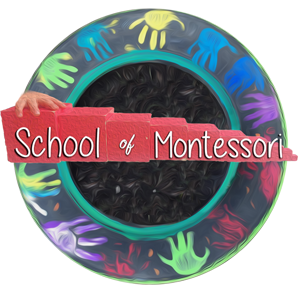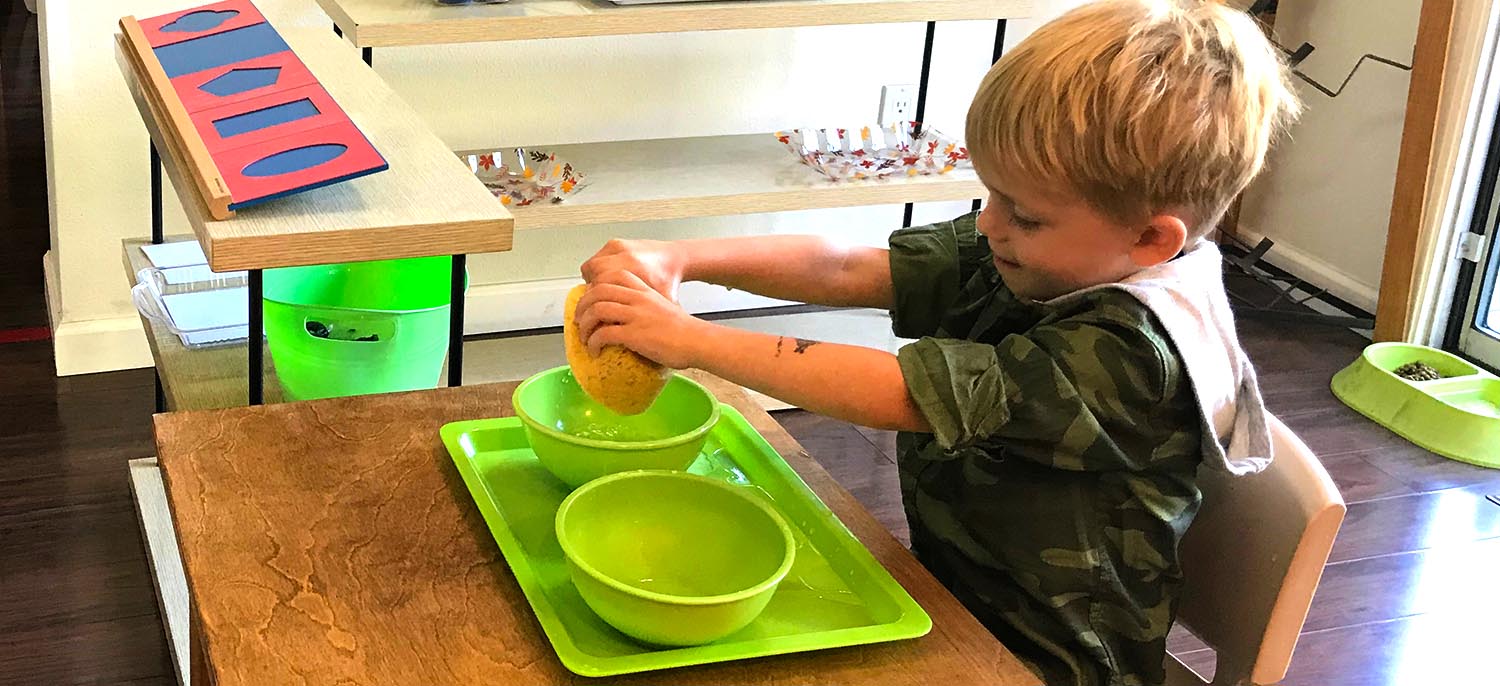Sponge Squeezing introduces water transferring with the ability to fill up an empty bowl by squeezing the water (three times) for each transfer, before absorbing more water into the sponge. The child recognizes that the bowl of full water becomes empty, and the empty one becomes full. It is important to concentrate on slower movements, waiting for that last drip as the child holds the sponge over the bowl before squeezing it. Also point out concepts using minimal vocabulary like, “this is full” and, “this is empty.”
*A sponge is available to wipe drips, and water should be poured out by the child at the end of cycle, so that the next student can begin working with fresh water.
Age
- 2.5 and Older
Category
Control of Movement
Exercises of Coordination
Care of the Environment
Prerequisites
Preparation Exercises
Putting on an Apron
Mopping (optional)
Materials
- Tray
- Two small bowls
- Each marked with a line for a water level.
- Each marked with a dot in the center.
- Small sponge
Activity Area
- Shelf to Table
Language
- Bowl
- Sponge
- Squeeze
- Empty
- Full
- Water Line
- Corner
Points of Interest
- Seeing the water lines and dots in the bowls.
- Seeing empty and full bowls.
- Seeing the patterns that the water makes in the sponge as it is being absorbed.
- Seeing the water disappear as it is absorbed by the sponge.
- Pressing the sponge with the index finger.
- Hearing bubbles emerge when index finger is pressed into the sponge.
- Hearing and seeing the first and last drop drip from the sponge.
- Using the TFG as one squeezes.
- Squeezing three times.
Control of Error
- Not seeing the last drop drip before centering the sponge over the bowl.
- Tearing the sponge by wringing.
- Seeing excess water left in sponge after squeezing.
- Seeing or feeling water squirt.
- Seeing the drops spilled.
- Seeing water left in two bowls.
- Seeing excess water left on the tray, table or floor.
Direct Aims
- To develop hand-eye coordination.
- To increase concentration.
- To increase a sense of independence.
- To establish a sense of order.
Indirect Aims
- To prepare for further water exercises.
- To prepare for writing.
Aditional Exercises
- Using sponges which have been cut into various geometric, seasonal or holiday shapes.
- Using colored water.
- Varying the size and shape of water containers.
Extensions
- Using a baster or eye dropper.
- Cleaning tables after lunch
- Squeezing clay.
Course Content
About Instructor


